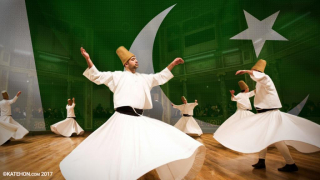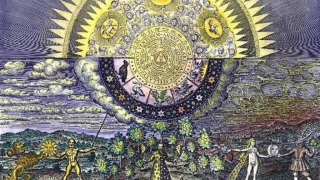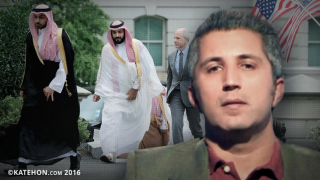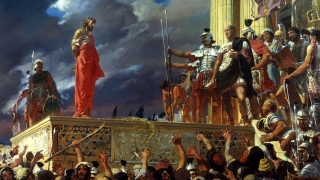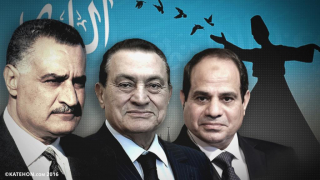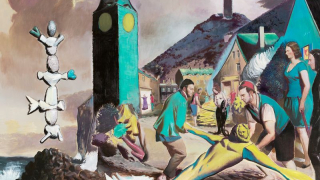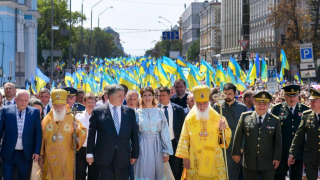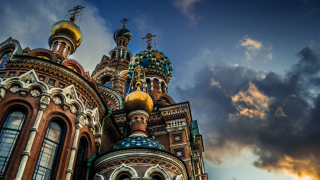The Covenants of Prophet vs Spanish Inquisition
The last critic to confront The Covenants of the Prophet Muhammad with the Christians of the World prior to the publication of Islam and the People of the Book is Carlos Martínez Carrasco who published a review of the Spanish version of the former, El minarete y el campanario: los pactos del Profeta Muhammad con los cristianos del mundo in Miscelánea de estudios árabes y hebraicos (Vol. 66: 348-351) in 2017.
Rather than address questions of content as called upon by any reputable reviewer, Martínez Carrasco commenced with a personal attack, calling into questions my credentials, stating that it has never been more important to know an author prior to getting to know his work. He alleges that the Spanish translation of The Covenants of the Prophet Muhammad with the Christians of the World “”is not an academic study with a methodology that is in accordance with the field of studies to which it corresponds.”
Martínez Carrasco claims that a review of my CV demonstrates that my academic training is distant from the field of Arabic and Islamic Studies. He observes, rightfully so, that I am a Professor of Foreign Languages, an expert in the Spanish language and Hispanic Studies, and that I completed a doctoral dissertation on The Indigenous Presence in Rubén Darío and Ernesto Cardenal (2000). He also claims that my interest in a field that is so different from my professional area of expertise is a result of my conversion to Islam at the age of 16, a personal journey that led me to complete studies in the Islamic Tradition both inside and outside of academia.
To Martínez Carrasco I say what Imam ‘Ali said to the Kharijites: “There is both truth and falsehood in what you say.” It is true that I completed a Bachelor’s degree in Spanish and French Language and Literature, along with an M.A. and a Ph.D. in Spanish American Literature. I have always been open about my academic accomplishments.
If I completed undergraduate and graduate majors in the Department of Spanish at the University of Toronto there was a reason: it was the only place where I could specialize in the three fields that fascinated me the most: Hispanic Studies, Native Studies, and Islamic Studies.
As a Hispanist, I studied the Spanish language and linguistics. I took courses in the history of Spanish, becoming perfectly well-versed in the Arabic influence on the Spanish language. As part of my academic training, I studied Spanish culture, history, and civilization, including the nearly 800 years of Arabic Muslim rule in al-Andalus. Consequently, I am perfectly well-versed in the history of Islamic Spain.
I obviously studied Spanish literature, including the influence it received from Arabic and Islamic literature. It is called Comparative Literature. It is what scholars like Luce López-Baralt do. One cannot compare two literary traditions unless one is an expert in both. Consequently, not only am I perfectly well-versed in Spanish literature, I am perfectly well-versed in Arabic literature. Hence, I am both a Hispanist and an Arabist.
I was introduced to Morisco literature by the distinguished Dr. Ottmar Hegyi when I was an undergraduate student. It was he who encouraged me to enter graduate school and complete a thesis on Aljamiado literature. I spent over a decade researching the topic in preparation for my dissertation; however, my mentor, Professor Hegyi, retired prior to its completion. That work, Shi’ism in the Maghreb and al-Andalus, is set to be published in the near future. It is a work that was researched and written while I was a graduate student at the University of Toronto.
Since the retirement of my mentor, an eminence in Aljamiado-Morisco literature and the influence of Islam on Spanish literature, left me without a thesis director, I decided to complete a thesis on The Islamic Presence and Influence in Pre-Columbian America, a work that bridged Hispanic and Islamic Studies. I completed all the research required and wrote a significant portion of my thesis only to learn that a sector of scholars did not consider it “politically correct.” They dogmatically embraced the notion that there was no contact with the Americas prior to Columbus. My work, in their view, was historical revisionism. I am sure they had anxiety attacks when it was established that the Norse had been traveling to these lands as early as the 10th century. Lance aux Meadows must have been a nightmare for them. Although I believe that some Muslims and Black Nationalists grossly exaggerate claims of African and Arab contact with the Americas, I have little doubt that some Arabs and Africans crossed the Atlantic prior to Columbus.
Rather than research myself out of existence, I decided to select a topic that was acceptable to all faculty members in the Department: The Indigenous Presence in Rubén Darío and Ernesto Cardenal. This subject bridged two interests: the Hispanic world and the indigenous world. And while the Islamic connection may not appear evident to outsiders, it should be noted that the work of Ernesto Cardenal is also influenced by Sufism and Political Islam. The fact that I specialized in the work of Ernesto Cardenal explains my authorship of Religion and Revolution: Spiritual and Political Islam in Ernesto Cardenal, a work that could only be completed by a person who is a specialist in both Hispanic literature and Islamic literature.
Martínez Carrasco might argue that I have no formal academic training in the field of Religious or Islamic Studies. This is false. I took courses in Religious Studies, Islamic Studies, and Philosophy at the University of Toronto. In fact, one of my professors was Dr. Solomon Alexander Nigossian, an Armenian Christian from Egypt who taught in the Department of Religion at the University of Toronto for decades. An accomplished academic, Nigosian authored many works on Islam. It was he who taught me the methodology employed in the field of Religious and Islamic Studies.
Martínez Carrasco also fails to mention that I completed post-doctoral studies in Arabic at various language institutes in the United States and Morocco. He fails to mention that I was never solely a Spanish Professor. I was a Professor of Spanish, French, and Arabic. In fact, I designed the entire Arabic major for a state university, including all the course offerings. What is more, I was hired by the University of Virginia to teach Religious Studies. I taught a course on Ibn Battutah as well as a course on Islam for its Semester at Sea program. Finally, all of my courses on Spanish Civilization and Culture included a component on the history of al-Andalus.
Although Martínez Carrasco treats it as irrelevant, I also completed the full cycle of traditional Islamic Studies both independently and at the hand of Muslim scholars from the Sunni, Shi’ite, and Sufi persuasions. I am widely recognized as an ustadh [professor of Islam], a shaykh [a Muslim religious leader], an ‘alim [religious scholar of Islam], and a hakim [Islamic herbalist]. These are not titles that I arrogantly assumed. They are titles that were granted to me by my peers.
Imam Ilyas Fawzy from al-Qarawiyyin University stated that “Your knowledge of Islam is profound.” Al-Shaykh al-Habib ‘Ali al-Jifri said that “Doctor John is very strong in Islamic Studies.” I am called upon to peer-review the works of Muslim jurists. Religious Authorities refer to me as a Religious Authority. This should suffice as proof of my qualifications. It is not necessary for me to list any more words of praise from fellow scholars and colleagues. Martínez Carrasco, however, would argue that the people I cite are clerics, as opposed to academics, as if priests, rabbis, and muftis were not reputable scholars.
I am far from being unique in combining both Hispanic and Islamic Studies. Other scholars who have done the same include Ottmar Hegyi, Luce López-Baralt, María Rosa Menocal, J.T. Cutillas-Ferrer, Maria Luisa Lugo Acevedo, Francisco Marcos Marín, T.B. Irving, L.P. Harvey, Gerald Albert Wiegers, A.G. Chejne, Vincent Barletta, Karima Bouras and the scores of scholars who specialize in Islamic Spain and Aljamiado-Morisco literature. I am an aljamiadista. That makes me a Hispanist, Islamologist, and an Arabist.
As Martínez Carrasco repeats, however, “I do not consider The Covenants of the Prophet… to be a study that is rooted in scientific criteria but rather a religious apology shrouded in pseudo-historical rhetoric.” In other words, the fact that I am a Muslim automatically excludes me from being an objective academic grounded in a scientific methodology. This is bigotry plain and simple. It is a discriminatory decree issued from a podium of prejudice. If being a Muslim disqualifies me from writing objectively about Islam, being a non-Muslim disqualifies Martínez Carrasco from writing about Islam. He subjectivity and hostility toward Islam is manifest.
After briefly describing the content of the book, Martínez Carrasco asserts that “From the first pages of the book, it is obvious that J.A. Morrow’s objective in The Covenants of the Prophet… is to whitewash the image of Muslims and defend them from those who accuse them of being extremists.”
Martínez Carrasco claims that The Covenants of the Prophet is a response to those who accuse Muhammad of being a bloody murderer who spread Islam by the sword. For this reason, claims the Spanish critic, I focus exclusively on the Covenants with the Christians while I am much more critical of the Jews. Apparently, this is because I live in “an eminently Christian environment.”
I am not an apologist. I do not have an agenda. I am an academic. I study sources and I let the sources speak for themselves. I have written and spoken about the gestation of The Covenants of the Prophet Muhammad with the Christians of the World. Martínez Carrasco should have done some research prior to make such specious allegations. Although he went out of his way to check my background and judged my book on the basis of it, he failed to find out that I am as interested in the Covenants of the Prophet with the Jews, Samaritans, and Zoroastrians as I am in the Covenants with the Christians.
Martínez Carrasco complains that “the entire book revolves around the idea of Islam as a religion of peace that embraces and supersedes the previous monotheisms.” It is for this reason, argues Martínez Carrasco, that both Héctor Horacio Manzolillo and I draw attention to the need for an interreligious understanding in face of new challenges, such as the eco-genocide that is faced by the planet. In other words, Manzolillo and I are really Islamic dominionists. As Martínez Carrasco writes,
Despite this desire to go beyond religious differences between Christians, Jews, and Muslims, the pages devoted to analysis occult a rather dangerous message which should be drawn to attention. Perhaps it is worthwhile to remember that we are dealing with a work written by a convert to Islam. The work contains an underground ideological current that blames all evils on the materialism of Western civilization while, at the same time, contrasts the spirituality of the Arab world which is treated (erroneously) as a homogeneous block. This idea makes Morrow, unwittingly and unconsciously, a hostage to a colonialist vision that makes the Arabs an ahistorical people, oblivious to the changes experienced in the world over the centuries, which keeps them in a state of ‘innocence.’
I have never seen such a twisted interpretation in all my life. Since when do I confound Arabs with Muslims? I make that distinction very clear. I am the very last person to idealize Arabs and Muslims. I absolutely accept the Prophet Muhammad. I respect other authorities of Classical Islam. And I bash anyone and everyone who fails to adhere to primordial ethical principles.
What kind of person considers the Covenants of the Prophet with the People of the Book to be dangerous? On the contrary, I contend that those who oppose them are particularly perilous. And while I blame the West for its sins and shortcomings, I am also the first to sing its praises. And the same goes for the East, the North, and the South, I say it like it is. I give praise when praise is due and I criticize when I am compelled to do so. It is my duty as a responsible scholar and academic.
Martínez Carrasco alleges that Manzolillo’s criticism of democracy as some sort of panacea is an indication of the general tone of the work. How a comment made by the translator in the commendatory preface can apply to the work itself is incomprehensible. This is far from being a major or even minor theme in the study. Apparently, it offended the critic enough to him to ask readers to “come of their own conclusions.” In other words, Morrow and Manzolillo are opposed to democracy. The comments of the critic reek to high heaven.
If Martínez Carrasco had conducted proper research, he would know full well that Manzolillo and I strongly support participative and representative democracy and oppose all forms of dictatorship and despotism. Simply because we criticize the pseudo-democracy of the ancient Greeks and Romans and the corporatocracy that is falsely presented as democracy today does make us anarchist or totalitarian in political inclination.
Manzolillo’s comments certainly struck a chord for they remain a bone in Martínez Carrasco’s throat. He claims that the background of the book consists of a comparison between Western, liberal, parliamentary democracies and Islam as a political-religious entity. In the words of the critic,
J.A. Morrow argues that Greco-Roman democracy was based on slavery and was profoundly unequal while Islam, from its onset, was opposed to slavery, provided equality to all, believers and unbelievers, regardless of age and gender, which immediately makes Islam, according to the author, superior to democracies. Perhaps he forgets that that the traffic of slaves persists to this day in the Islamic world although actual figures are unknown. Morrow perhaps also forgets that he can write books like this one due to the rights that are granted to him by such a pernicious system as democracy.
There is no doubt in my mind that the vision of Islam promulgated by the Prophet Muhammad is far superior to the so-called democracies of the Greeks and Romans. In fact, when given a choice between early Islamic rule and Byzantine rule, most of the Jews, Samaritans, and Christians of the Middle East, North Africa, and the Iberian Peninsula opted for Islamic rule despite the fact that few if any Muslim rulers lived up to the standards set forth by the Messenger of Allah. Still, even with its shortcomings, the system of government implemented in Muslim lands granted rights, freedoms, and protections that only surfaced in the Western world in the 20th century.
If Martínez Carrasco had any sense of honesty, he would distinguish between the teachings of Islam preached by the Prophet and the un-Islamic practices of pseudo-Muslims. The Prophet Muhammad never owned slaves. He never encouraged his Companions to own slaves. He said that slave traders were the worst of human beings. He promoted and even mandated the liberation of slaves. Both he and his Companions freed tens of thousands of slaves. Based on a survey of early sources, it is estimated that they liberated 39,000 enslaved human beings.
Rather than bash Islam for the fact that some barbarians in places like Sudan, Chad, and Mali, engage in slavery, how about taking a long hard look in his own mirror, the West, where women and children are enslaved in staggering numbers. In the United States, over 100,000 girls are sold into sexual slavery every year. The numbers in Europe are comparable. ISIS sex slaves get plenty of media attention; however, they pale in comparison to the number of sex slaves in modern, Western, democracies. While an institution like slavery in parts of Black Africa that has not changed substantially since medieval times is one thing, it is another thing altogether for there to be sex slaves in Western Europe and the United States, the self-professed bastions of democracy and human rights, regardless of the fact that both forms of slavery, both Eastern and Western, are absolutely reprehensible.
Martínez Carrasco claims that “with such premises as a starting point, it is legitimate to believe that we are not dealing with a scientific study of historical facts based on textual evidence. On the contrary, what Morrow articulates is a clearly religious discourse that does not seek to establish a more or less rigorous understanding of the past, but rather a theological Truth, with everything that it implies.”
Martínez Carrasco insists that the theological discourse of The Covenants of the Prophet Muhammad with the Christians of the World is evident in the incorrect use – out of ignorance – of historical terminology which is continually interpreted in a religious light. The critic alleges that my approach to Islamic sources is almost always acritical and that any hypothesis that questions the Islamic Canon is quickly dismissed as being the product of “spiritually insecure scholars.”
Although I do not have a degree in history, I was trained in historical methodology. I know full well how to handle sources. Hundreds of academics, including historians, have praised and endorsed The Covenants of the Prophet Muhammad with the Christians of the World. Of course, such facts are ignored by certain cave-dwelling Spaniards. And in case Carrasco did not capiche, the Muhammadan Covenants do not form a part of the Islamic Canon. They were ignored. They were suppressed. They were extirpated. And they are now being revived. If the critic bothered to read the book in its entirety, rather than focus on a few words by the translator, he would know that I do not defend the status quo. On the contrary, I argue that the Covenants of the Prophet were concealed by so-called Muslim leaders who wanted freedom of action without having to truly take prophetic principles into consideration. In fact, I am relentless in my criticism of literalism, fundamentalism, and extremism.
Martínez Carrasco claims that I yearn for “the ‘golden age’ represented by the prophetic period during which Muhammad ruled; a Muhammad who is presented as a man of peace, an anti-colonialist, but who is simultaneously presented as a great military strategist.’”
Neither Manzolillo nor I yearn for a “golden age” of Islam. We are not Salafis who dream of an imaginary, legendary, and mythical Muslim utopia rooted in the 7th century. We value positive aspects. We criticize negative aspects. We realize that nothing is perfect. Since we live in the present, and plan for the future, we do not live in the past. We do, however, study the past in order to inform our understanding, to avoid previous mistakes, and to adopt strategies that will prove to be successful. We seek not to imitate. We seek not to replicate. We seek to derive principles and to apply them.
As for Muhammad, the man was well-rounded. He was a mystic but a man of the people. He was unlettered but erudite. He was powerful but humble. He could convey concepts to both formally trained scholars and to simple shepherds. He was caring and compassionate but he could be ferocious in battle. War and peace go hand in hand. If you want peace, you better prepare for war. This is reality. The Prophet Muhammad himself said, “I smile and I fight.” He came with the Word and the Sword but it was the sword of social justice.
Continuing with the same preposterous claim, Martínez Carrasco warns that “The discourse is masked by an alleged equidistance between the ‘black legend’ and the ‘pink legend.’ But what it really offers is an updated version of the second adorned with an argument that does not hold up to a critical analysis, such as the claim that it was Muhammad who elaborated the dogma of the Immaculate Conception.”
Unless one is familiar with Hispanic history, the reference to the “black legend” and the “pink legend” will be lost to most readers. In the Hispanic context, the “black legend” refers to the claims that the Spaniards committed genocide against the indigenous inhabitants of the Americas. In the Muslim context, the “black legend” mentioned by Martínez Carrasco would be the demonization of Islam and Muslims that was common throughout European history whereas the “pink legend” is the presentation of Islam, particularly in the Iberian Peninsula, which is depicted as some sort of “Golden Age.”
In the mind of the critic, The Covenants of the Prophet Muhammad with the Christians of the World is simply a repackaged version of the “pink” or “rosy legend” that does not stand up to critical analysis. Once again, if the critic actually read or actually understood what he read, he would know that I praise the principles and protections that the Prophet provided in his Covenants with the Jews and Christians. I am impressed with those promises and privileges. I am only impressed with Muslim leaders inasmuch as they abided by them. In short, they are the litmus test that I use when assessing the Islamicity of so-called Islamic rulers.
As for Martínez Carrasco’s claim that I asserted that it was Muhammad who elaborated the dogma of the Immaculate Conception, I will allow my book to speak for itself. It reads: “While most Muslims and Christians are ignorant of the possibility, it appears that the first person to formulate the doctrine of the Immaculate Conception was Muhammad himself, a fact conceded by both Catholic and Protestant theologians (Grassi 74). Some assert that the Prophet learned such doctrines from the Eastern Christians, but ignore the strong evidence that the Christians might in face have learned it from him” (13).
However, as any intelligent reader observes, it is not I who is making the claim, it is M. Grassi (Alfio) in his Charte Turque ou Organisation religieuse, civile et militaire de l’empire ottoman which was published in Paris in 1826. As for myself, I simply state that there is strong evidence to support this claim. The comment in question, which is completely peripheral to the study as a whole, completely and totally sidelined the critic who actually misrepresented that I wrote. Dumb or duplicitous? To quote Carrasco, I will let readers “come to their own conclusions.”
To conclude his Islamophobic review, Martínez Carrasco writes that: “The Covenants of the Prophet… should be placed on the opposite end of the spectrum of revisionists works that overemphasize the negative aspects of Islam. It pursues a legitimate objective, but it does so at the cost of falsifying the past, which does not lead to a better understanding of Islamic reality, but to its conversion into a sort of ‘lost paradise,’ a utopia hardly achievable, which reminds us of the poor capacity of Muslims to adopt to change, always hanging on to a past that paralyzes them.”
Although I disagree with virtually everything that Martínez Carrasco has to say, I proudly agree that The Covenants of the Prophet Muhammad with the Christians of the World is far removed from revisionist works, namely, the works of academic termites, both Muslim and non-Muslim, who are determined to destroy the foundations of Islam. Far from “falsifying the past,” however, I shed a shining light on the past; I revive the past; and I revindicate the past. I present Islam as it truly was, as it truly is, and as it should always truly be. This may not be the “Islam” of the Saudis, the Salafis, the fundamentalists, the extremists, the literalists, the absolutists or the “Islam” of the liberals, the feminists, and the reformists. It is, however, the Islam of the Prophet: no ifs, ands, or buts.
As for the gross overgeneralization that Muslims, as whole, are incapable of adapting to change and Modernity, such stereotypes are unbefitting of a scholar of any rank or repute. Muslims face many challenges. They have struggled through colonialism and imperialism. They suffer from foreign intervention in their domestic affairs. They suffer from the soul-suffocating stench of Western debauchery, materialism, hedonism, and nihilism. And yet they survive and they thrive and they are filled with aspirations. As “backwards” as many Muslims may be, and despite of their moral shortcomings, I am proud that they represent the only major group that refuses to submit to militant secularism while other populations kneel eagerly, anxiously, and precipitously at the feet of Mammon.
Martínez Carrasco’s weakest point is that he focused his critique on the intentions of the author and the translator. This explains why he focused disproportionately on the prologue. Beside mentioning the chapters of the book and the topics they address, he does not provide any critique or any commentary -- either in favor or against -- of the book’s actual content. Instead of reviewing the book, he judges the intentions for which it was written. In other words, he does not care about the work. He does not care about evidence. Rather, he is only interested in denigrating the book based on the supposed intentions of Manzolillo and the fact that Morrow converted to Islam at the age of 16. Furthermore, by acting in such a fashion, it is Martínez Carrasco who shows his true intentions.
And since Carlos Martínez Carrasco commenced his book review by questioning my credentials, it is only fitting that I conclude my rebuttal with a critique of his credentials or, shall we say, the lack thereof. Mr. Carrasco is a “Licenciado en historia por la Universidad de Granada.” In other words, he holds a bachelor’s degree in history from the University of Granada. He does not have an M.A. He does not have a doctoral degree. He does not have a terminal degree. Mr. Carrasco is an “investigador del Centro de Estudios Bizantinos, Neogriegos y Chipriotas.” In other words, he is a researcher in the field of Byzantine, Neo-Greek and Cyprian Studies. He has no formal academic training in Religious Studies, Arabic Studies, or Islamic Studies. Mr. Carrasco is not an Assistant Professor. He is not an Associate Professor. And he is most certainly not a Full Professor. He is simply an Adjunct in the Department of Medieval History at the University of Granada. In terms of his academic achievements, he is the author of ten papers, two book reviews, and one lecture. He also wrote a novel.
If Carlos Martínez Carrasco wishes to critique my work, let him complete a M.A. and Ph.D. in Religious Studies, Arabic Studies or Islamic Studies. In fact, any terminal degree in a related field in the Humanities would do. And since I am also a shaykh and an imam, on top of being an academic, let Mr. Carrasco also become Father Carrasco, a Catholic priest or, if he prefers, a rabbi. That way, if he cannot critique my work as an academic, at least he can critique it as a cleric. And while he is at it, let him rise up in the academic ranks, becoming an Assistant Professor, an Associate Professor and then, a Full Professor or, as the rank is known in Spain, Profesor Titular. Let him also publish one hundred academic articles, presents dozens of scholarly papers and conference, and publish dozens of peer-reviewed books. Then, and only then, would Carlos Martínez Carrasco be my peer and be qualified to peer-review my books. And Allah is Just, All-Hearing, and All-Seeing.


